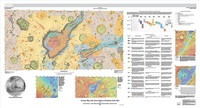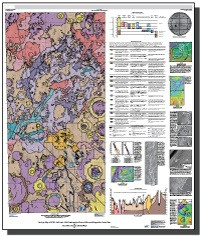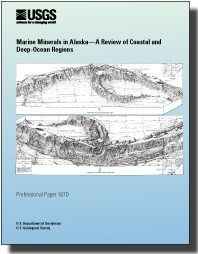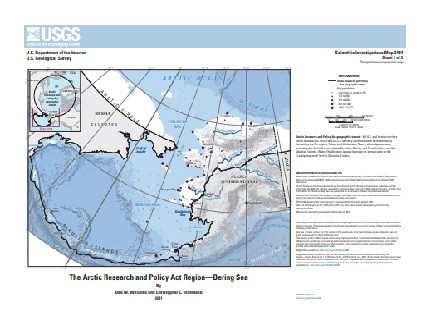
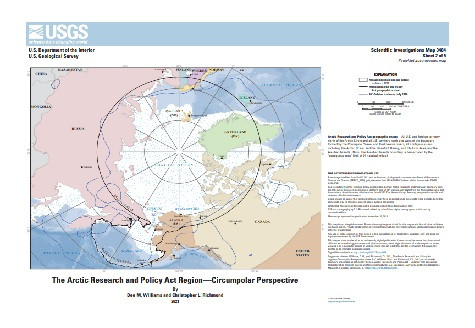
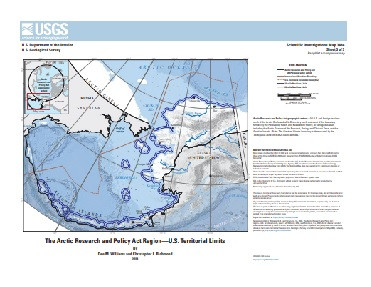
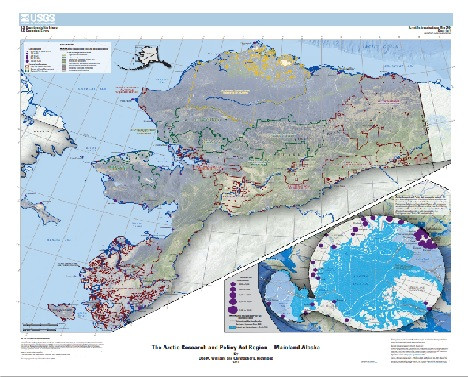

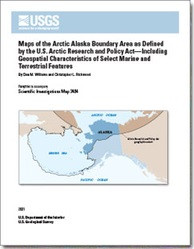
ARCTIC ALASKA BOUNDARY AREA AS DEFINED

Product Details
- Product Number
- 534182
- Series
- SIM-3484
- Scale
- NO SCALE
- Alternate ID
- SIM3484
- Authors
- CHRISTOPHER L RICHMOND
- Version Date
- 01/01/2021
- Regions
- AK
- Countries
- USA
- Media
- Paper
- Format
- Flat
- Digital Reproduction
- Yes
Additional Details
- Description
-
Maps of the Arctic Alaska Boundary Area as Defined by the U.S. Arctic Research and Policy Act—Including Geospatial Characteristics of Select Marine and Terrestrial Features
Scientific Investigations Map 3484
First posted November 30, 2021
For additional information, contact:
Regional Director, Alaska
https://www.usgs.gov/unified-interior-regions/region-11
U.S. Geological Survey
4210 University Drive
Anchorage, Alaska 99508-4560
Abstract
This pamphlet presents a series of general reference maps showing relevant geospatial features of the U.S. Arctic boundary as defined by the U.S. Congress since 1984. The first generation of the U.S. Arctic Research and Policy Act (ARPA) boundary maps was originally formatted and published in 2009 by a private firm contracted with the National Science Foundation and the U.S. Arctic Research Commission. Recognizing the steadily increasing relevance of Arctic issues to national and global affairs that requires more functional projections and online tools, the U.S. Geological Survey (USGS) Alaska Regional Office and the National Geospatial Technical Operations Center developed this updated series of ARPA boundary maps. Map sheet 1 shows the ARPA boundary as it relates to Alaska and marine features of the Bering Sea. Map sheet 2 shows the ARPA boundary from a circumpolar perspective. Map sheet 3 shows the national boundary of the U.S. 200-nautical-mile Exclusive Economic Zone through the Bering, Chukchi, and Beaufort Seas, facilitating Arctic domain awareness and more consistent territorial assessments of the U.S. Arctic. Map sheet 4 shows, in poster-size detail, the ARPA boundary as it relates to terrestrial features of Arctic Alaska north of the Yukon and Kuskokwim Rivers. Map sheet 5 shows, in poster-size detail, the ARPA boundary as it relates to marine and terrestrial features of the Aleutian Islands. These new maps collectively illustrate several value-added attributes, including updated bathymetry and shoreline refinements, demographic information, international borders and offshore territorial claims, Alaska conservation areas, Alaska land cover, Alaska terrestrial shaded relief, annual sea ice maximum extent, annual circumpolar 10-degree-Celsius isotherm, location of active volcanoes, and updated geospatial information. The static PDF-file maps offer value as standalone products but are intended for use with a potential interactive website that can be sourced by annual data updates, allowing users to access the various map layers in a dynamic up-to-date environment.
- Survey Date
- 2021
- Print Date
- 2021
- Height In Inches
- 35.000
- Length In Inches
- 34.000
- Two Sided
- No
- Pieces
- 6
- Languages
- English


